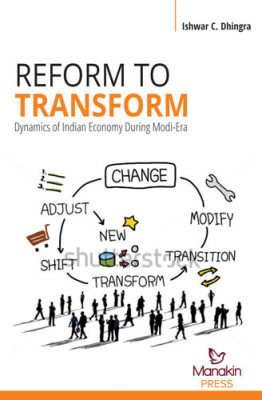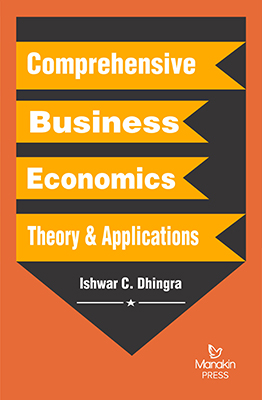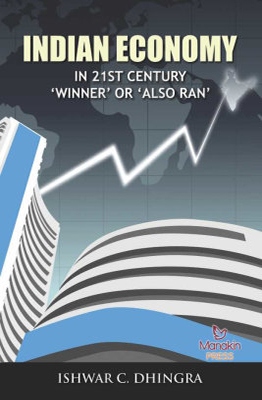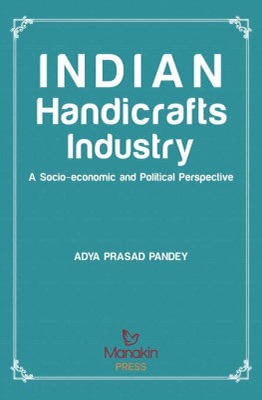Reform to Transform: Dynamics of Indian Economy During Modi-Era
₹1,895.00
Ishwar C Dhingra | Category: Economics
Binding Type: Hard Binding
Book Details
ISBN: 9789386221148
YOP: 2017
Pages: 640
Order also on
Change’ is the law of life, be it an individual or a nation. As a matter of fact, ‘change’ is the only fixed factor universally that keeps on changing. Change calls for a change, it calls for human intervention, and if the human intervention fails to read the pulse or see the direction in which wind is blowing the law of nature sets into work. After working with ‘state-controlled’ model of economic growth for a period of four decades ending late nineteen eighties, we made a switch over to market-oriented framework. It worked well for about a decade and a half before fatigue set in. Crony capitalism bared opened its fangs. Survival of nation-state was at stake. In this gloom and distress, the General Elections of 2014 brought to fore the need for a total transformation of the social-economic institutional and administrative structure. The new government lost no time in responding to the need of the hour. Three years down the line we make an inventory of what progress we have made towards reaching the stated goals, where we have lagged behind and most important what is the plan of action. “We can and we will.” is the message coming out of the corridors of power.
1. From Change to Transformation
2. Administration and Governance (Democracy Revisited)
3. Indian Economy in Global Perspective 2015–16
4. Emerging Market and Developing Economies: Recent Developments and Outlook
5. Global Policy Challenges
6. Indian Economy in Transition
7. Indian Economy During Modi-Era (2014–17)
8. Policy Initiatives During the Modi-Era
9. New Monetary Policy Framework: Rapid, Inclusive Growth
10. Fiscal Instruments for Transformation: Cooperative Federalism
11. India’s External Sector: Gearing Up for Rapid Growth
12. New Growth Initiatives: 2014 Onwards
13. Review of New Socio-Economic Development Programmes: Steps Towards Transformation
14. Policy Initiatives Towards Transformation
15. Initiatives in Infrastructure: Moving Towards Transformation
16. Observations and Conclusions
Change’ is the law of life, be it an individual or a nation. As a matter of fact, ‘change’ is the only fixed factor universally that keeps on changing. Change calls for a change, it calls for human intervention, and if the human intervention fails to read the pulse or see the direction in which wind is blowing the law of nature sets into work. After working with ‘state-controlled’ model of economic growth for a period of four decades ending late nineteen eighties, we made a switch over to market-oriented framework. It worked well for about a decade and a half before fatigue set in. Crony capitalism bared opened its fangs. Survival of nation-state was at stake. In this gloom and distress, the General Elections of 2014 brought to fore the need for a total transformation of the social-economic institutional and administrative structure. The new government lost no time in responding to the need of the hour. Three years down the line we make an inventory of what progress we have made towards reaching the stated goals, where we have lagged behind and most important what is the plan of action. “We can and we will.” is the message coming out of the corridors of power.
1. From Change to Transformation
2. Administration and Governance (Democracy Revisited)
3. Indian Economy in Global Perspective 2015–16
4. Emerging Market and Developing Economies: Recent Developments and Outlook
5. Global Policy Challenges
6. Indian Economy in Transition
7. Indian Economy During Modi-Era (2014–17)
8. Policy Initiatives During the Modi-Era
9. New Monetary Policy Framework: Rapid, Inclusive Growth
10. Fiscal Instruments for Transformation: Cooperative Federalism
11. India’s External Sector: Gearing Up for Rapid Growth
12. New Growth Initiatives: 2014 Onwards
13. Review of New Socio-Economic Development Programmes: Steps Towards Transformation
14. Policy Initiatives Towards Transformation
15. Initiatives in Infrastructure: Moving Towards Transformation
16. Observations and Conclusions
| Weight | 2.125 kg |
|---|---|
| Dimensions | 24 × 16 × 4 cm |
| yop |
2017 |
| subject-category |
Economics |
| isbn |
9789386221148 |












Reviews
There are no reviews yet.